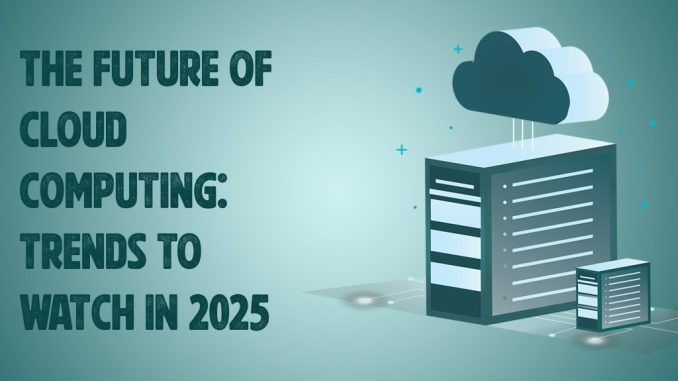
Cloud computing has undeniably become the backbone of modern enterprise, a ubiquitous force that has reshaped how businesses operate, innovate, and scale. What began as a revolutionary concept for offloading IT infrastructure has matured into a sophisticated ecosystem, and its evolution is far from over. As we look towards the next decade, the future of cloud computing promises even deeper integration into core business functions, driven by emerging technologies and an intensifying focus on efficiency, resilience, and intelligence. For any organization aiming to stay competitive, understanding these burgeoning trends is not merely an exercise in technological foresight, but a strategic imperative.
One of the most significant shifts on the horizon is the increasing prominence of **hybrid and multi-cloud strategies**. While many businesses initially adopted a single public cloud provider, the complexities of diverse workloads, regulatory requirements, and the desire to avoid vendor lock-in are pushing organizations towards more nuanced deployments. A hybrid cloud combines public cloud resources with on-premises infrastructure, offering a blend of control and scalability. Multi-cloud, on the other hand, involves utilizing services from multiple public cloud providers. This trend is driven by the need for greater flexibility, disaster recovery capabilities, and the ability to choose the “best-of-breed” services for specific applications. Businesses are realizing that no single cloud provider can perfectly meet all their needs, leading to sophisticated architectures that intelligently distribute workloads across various environments to optimize performance, cost, and compliance.
The symbiotic relationship between **Artificial Intelligence (AI) and cloud computing** is set to deepen dramatically. AI workloads, particularly those involving large language models and complex machine learning, demand immense computational power and vast datasets, making the scalable infrastructure of the cloud an ideal host. In turn, AI is increasingly being embedded into the very fabric of cloud services, enabling smarter, more automated, and self-optimizing cloud environments. We’ll see AI-driven automation of resource allocation, predictive analytics for cloud cost optimization, and intelligent threat detection for enhanced security. For example, cloud providers are offering AI-as-a-service platforms that democratize access to sophisticated AI capabilities, allowing businesses of all sizes to leverage machine learning for customer insights, operational efficiency, and new product development without significant in-house expertise. This integration ensures that the cloud remains the primary engine for AI innovation and deployment.
**Edge computing** is another critical trend that will profoundly influence the cloud’s future. As the Internet of Things (IoT) proliferates and more data is generated at the “edge” of the network – from smart factories and autonomous vehicles to connected cities – the need for real-time processing and ultra-low latency becomes paramount. Sending all this data back to a central cloud for processing is often inefficient and impractical. Edge computing brings computation and data storage closer to the source of data generation, acting as a crucial extension of the cloud. This distributed model allows for instantaneous decision-making, reduced bandwidth consumption, and enhanced data security. The future will see a seamless continuum where data flows intelligently between edge devices, local edge servers, and centralized cloud data centers, optimizing for responsiveness, efficiency, and scale depending on the workload’s requirements.
Furthermore, the focus on **sustainability in cloud computing** will intensify significantly. As cloud data centers consume vast amounts of energy, there’s growing pressure from regulators, customers, and internal ESG (Environmental, Social, and Governance) mandates for cloud providers to minimize their environmental footprint. Expect to see continued investment in renewable energy sources for data centers, more energy-efficient hardware and cooling technologies, and AI-driven power management systems. Businesses will increasingly factor a cloud provider’s sustainability commitments into their selection criteria, making “green cloud computing” a key differentiator in the market.
Finally, the evolution of **cloud-native development** and **serverless computing** will continue to accelerate. Cloud-native architectures, built using microservices, containers, and Kubernetes, are designed to leverage the inherent elasticity and scalability of cloud environments. This approach fosters agility, rapid deployment, and resilience. Serverless computing takes this a step further, abstracting away the underlying server infrastructure entirely. Developers can deploy code and applications without worrying about server provisioning, scaling, or maintenance, paying only for the compute resources actually consumed. This model significantly reduces operational overhead, accelerates time-to-market for new services, and enables highly scalable and cost-efficient application delivery, becoming increasingly attractive for event-driven architectures and rapid innovation.
In essence, the future of cloud computing is not about a singular trajectory but a convergence of powerful trends that will make cloud infrastructure more intelligent, more distributed, more sustainable, and more integrated into every facet of business operations. For enterprises, the strategic imperative will be to navigate this evolving landscape by embracing hybrid and multi-cloud flexibility, leveraging AI to unlock deeper insights and automation, extending their digital reach to the edge, and prioritizing sustainable cloud practices. Those that proactively adapt to these shifts will be best positioned to harness the full transformative power of the cloud, driving innovation, enhancing efficiency, and securing a competitive advantage in the digital economy.